Mariton: Butterfly Walks
by Tim Burris, Preserve Manager. Photos by Carole Mebus.
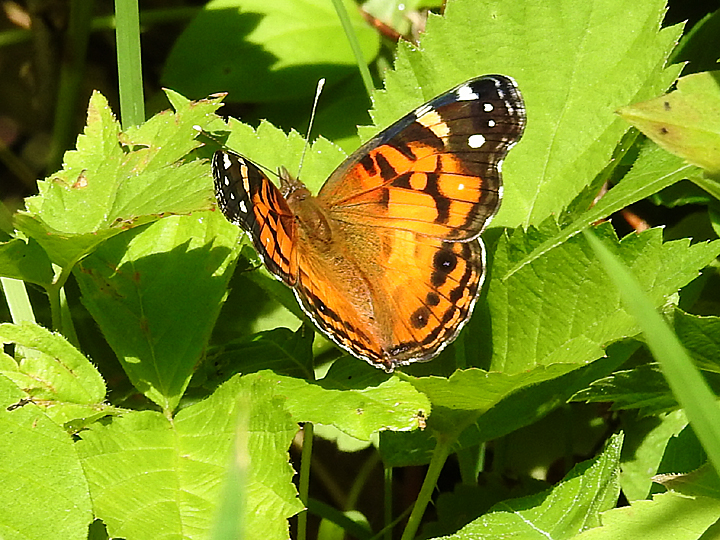
American Lady Butterfly
We saw a good diversity of butterflies on Tuesday’s walk. Our weekly Bird Walks are over for the season, and now we start with weekly Butterfly Walks into July (though we still stop to look at birds). The Milkweed flowers were just starting to open this week. While Milkweed is known to be the food plant for Monarch caterpillars, the flowers attract several butterflies and pollinators to the blossoms for nectar.
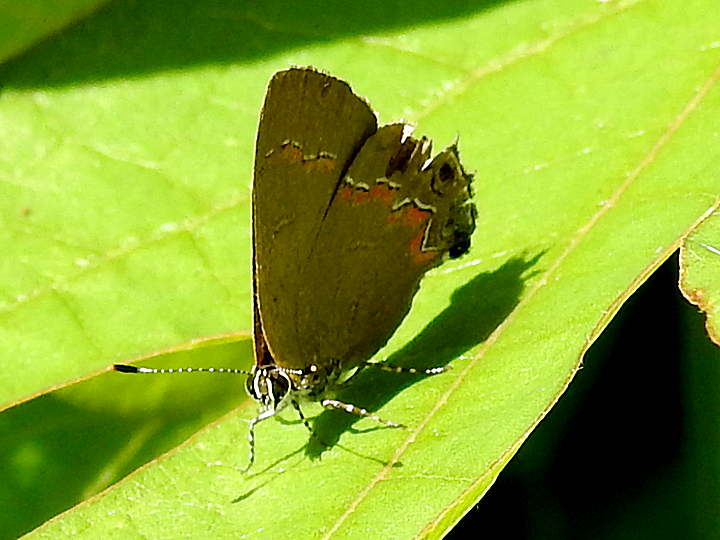
This Red-banded Hairstreak was a special sighting.
For the last two years we haven’t seen the diversity of butterflies that we expected and were scratching our heads for an explanation. We have good habitat with a variety of flowers that are continually blooming. The food plants of several butterfly/caterpillars are abundant at Mariton. With fingers crossed, we are cautiously optimistic that this year the butterfly numbers and diversity will start coming back.
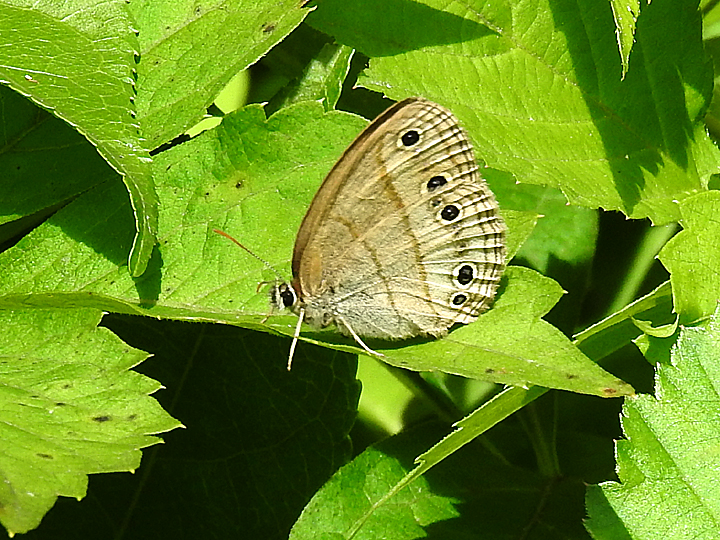
Little Wood Satyr
We saw plenty of Little Wood Satyrs which are a spring butterfly that likes to flit up from the edge of trails. As summer progresses and the adults lay eggs and we will see them less, but they are abundant right now.
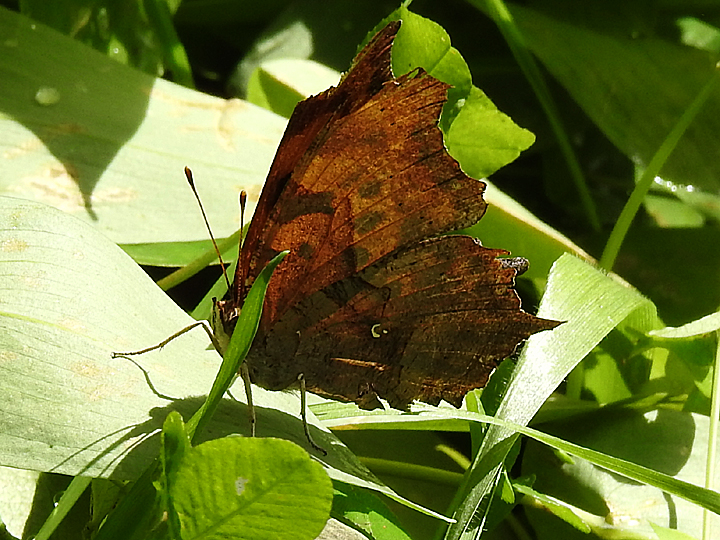
A Question Mark with its identifying “?” on the hind wing.
Over the years, I have shown lots of Carole’s photos of Eastern Commas in this blog. Question Mark butterflies look similar but have not been as prevalent. In the photo above you can see the tiny white markings that give this butterfly its name. Below is the same butterfly with its wings open.
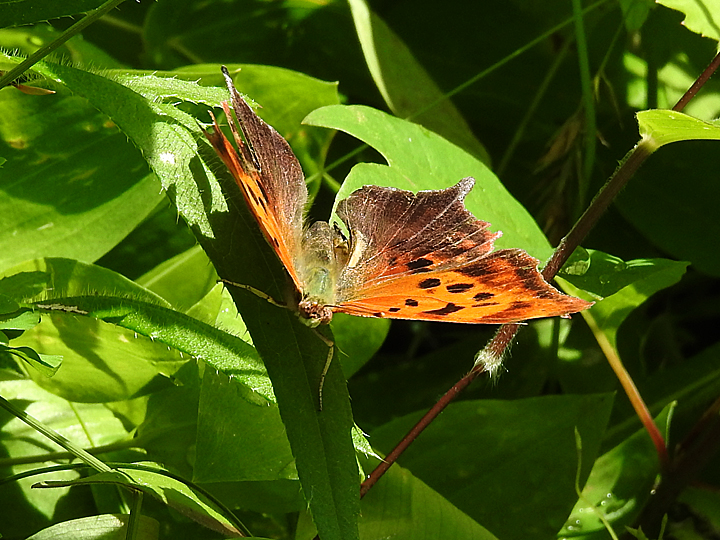
Butterflies have two sides to their beauty: topside and underside.
We found a Hackberry Emperor along the trail. It was mentioned how they often land on people for the salt in perspiration or are just attracted to clothing. When we got back to the Nature Center we found another Hackberry Emperor that wouldn’t get off of Carole. Carole finally got a photo when it landed on the pavement for heat.
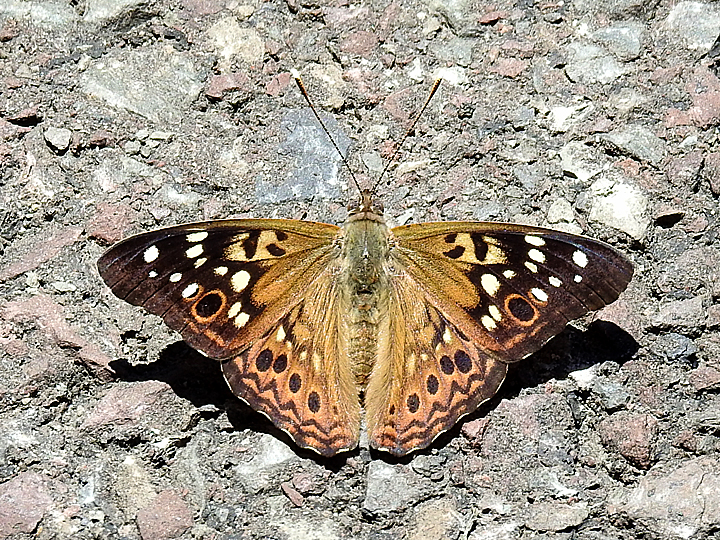
Hackberry Emperor
This is a charming butterfly that seems to be attracted to light colors. A few months back I wrote a blog about the Hackberry tree (Celtis occidentalis) that is the food plant for Hackberry Emperor caterpillars. There are several Hackberry trees near the Nature Center, so I often find this butterfly perched on the stone work of the building.
